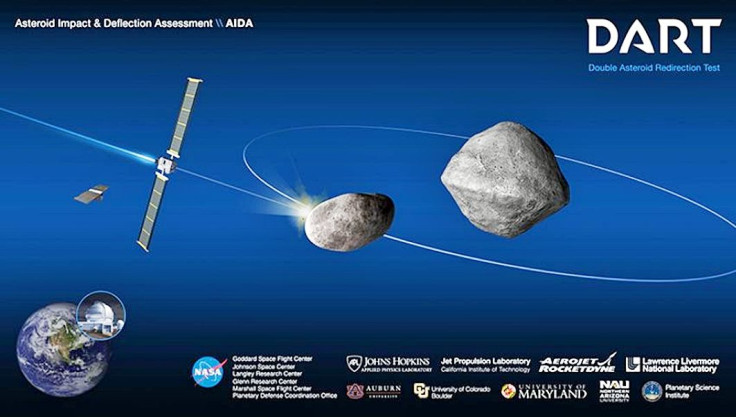ESA To Send 'Spacecraft Detective' To Investigate Aftermath Of DART Mission
KEY POINTS
- Hera mission is scheduled to launch in 2024
- It will reach Dimorphos in 2026, four years after the DART mission crash
- Hera will be accompanied by two CubeSats called Juventas and Milani
With the success of NASA's Double Asteroid Redirection Test (DART) mission, which was able to hit and hopefully deflect the asteroid moonlet Dimorphos, many people may be wondering what will happen next. The European Space Agency (ESA) actually has a mission in place. It is called Hera, and it will look into the aftermath of the epic collision.
Dimorphos is a 160-meter moon that orbits a huge mountain-sized body that measures 780 meters in diameter. Both space bodies are part of a binary asteroid system — the Didymos. It comprises a pair of near-Earth asteroids.
The smaller Dimorphos was hit by the DART mission, and it will also be the object of attention for the ESA's Hera.
"[Dimorphos] is a very low-gravity environment because it's very small," Patrick Michel, Hera principal investigator at Cote d'Azur University in France, said during an ESA news conference, according to Space.com.
"Because the gravity is so small, the crater can take hours to form, so we need another spacecraft detective that comes on the site and gives us the final outcome details," Michel added.
Scheduled to launch in 2024, Hera will reach Dimorphos in 2026, four years after the DART mission crash. Hera mission is named after the Greek goddess of marriage, and together with DART, it will be the first probe to meet up with a binary asteroid system — relatively little understood systems that makeup up to 15% of all asteroids known to date.
Originally, Hera was supposed to reach Dimorphos before the collision of DART with the asteroid moonlet and capture the event. However, delays in approval and late funding hindered Hera from assuming that role. Instead, LICIACube, a tiny CubeSat built by Italy, was commissioned to take its place.
Despite the initial divergence, Hera will still prove to be very useful in conducting a "crash scene investigation" of Dimorphos' impact crater and the surrounding surface.
"Hera will measure the mass of Dimorphos, which will give us a more accurate estimate of how efficient this technique was in deflecting the asteroid," Michael Kueppers, Hera project scientist at ESA, said during a news conference held on Sept. 15, according to the outlet.
"It will also characterize the physical properties of the two asteroids. Things like strength and porosity, which will help us extrapolate the data from DART to other asteroids in case that we will in the future need this technique to avoid a catastrophe on Earth," Kueppers added.
To accurately study the DART mission impact, scientists will need the mass of Dimorphos and its crater shape, which Hera will provide. The data from the Hera mission will generate information on the hits and misses of the DART mission. Appropriate feedback will then make Earth ready for planetary defense if ever needed.
Hera will be accompanied by two CubeSats — Juventas and Milani. Juventas will perform a detailed X-ray scan of the two asteroids with its low-frequency radar instrument, while Milani will study asteroid dust as well as the surface in near-infrared wavelengths.
"It will be the first time that we will probe the internal properties and subsurface of an asteroid and chart [the characteristics] that influence the outcome of the impact," Michel said further. "We also hope to touch down on the surface of the asteroid with at least one of the two CubeSats, and that will allow us to learn a lot."
Approved in 2019, Hera is currently being put together in facilities in Italy and Germany, according to Ian Carnelli, Hera project manager at the ESA.

© Copyright IBTimes 2024. All rights reserved.





















